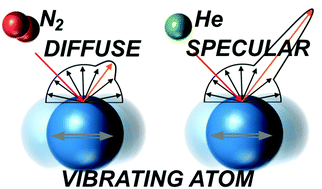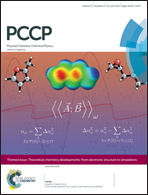Gas molecule scattering & ion mobility measurements for organic macro-ions in He versus N2 environments
Abstract
A pending issue in linking ion mobility measurements to ion structures is that the collisional cross section (CCS, the measured structural parameter in ion mobility spectrometry) of an ion is strongly dependent upon the manner in which gas molecules effectively impinge on and are reemitted from ion surfaces (when modeling ions as fixed structures). To directly examine the gas molecule impingement and reemission processes and their influence, we measured the CCSs of positively charged ions of room temperature ionic liquids 1-ethyl-3-methylimidazolium dicyanamide (EMIM-N(CN)2) and 1-ethyl-3-methylimidazolium tetrafluoroborate (EMIM-BF4) in N2 using a differential mobility analyzer-mass spectrometer (DMA-MS) and in He using a drift tube mobility spectrometer-mass spectrometer (DT-MS). Cluster ions, generated via electrosprays, took the form (AB)N(A)z, spanning up to z = 20 and with masses greater than 100 kDa. As confirmed by molecular dynamics simulations, at the measurement temperature (∼300 K), such cluster ions took on globular conformations in the gas phase. Based upon their attained charge levels, in neither He nor N2 did the ion-induced dipole potential significantly influence gas molecule–ion collisions. Therefore, differences in the CCSs measured for ions in the two different gases could be primarily attributed to differences in gas molecule behavior upon collision with ions. Overwhelmingly, by comparison of predicted CCSs with selected input impingement–reemission laws to measurements, we find that in N2, gas molecules collide with ions diffusely – they are reemitted at random angles relative to the gas molecule incoming angle – and inelastically. Meanwhile, in He, gas molecules collide specularly and elastically and are emitted from ion surfaces at determined angles. The results can be rationalized on the basis of the momentum transferred per collision; in the case of He, individual gas molecule collisions minimally perturb the atoms within a cluster ion (internal motion), while in the case of N2, individual gas molecules have sufficiently large momentum to alter the internal motion in organic ions.


 Please wait while we load your content...
Please wait while we load your content...